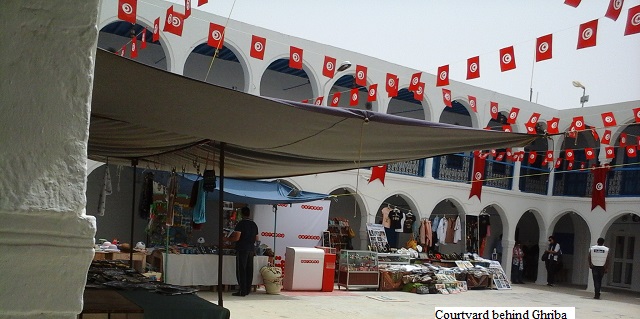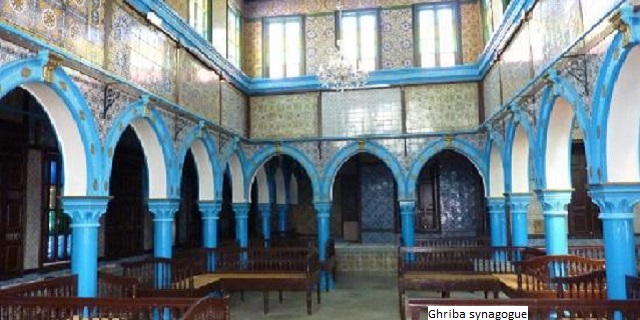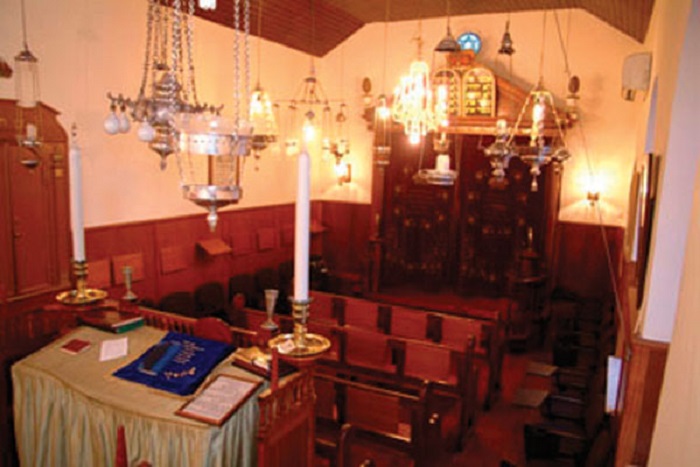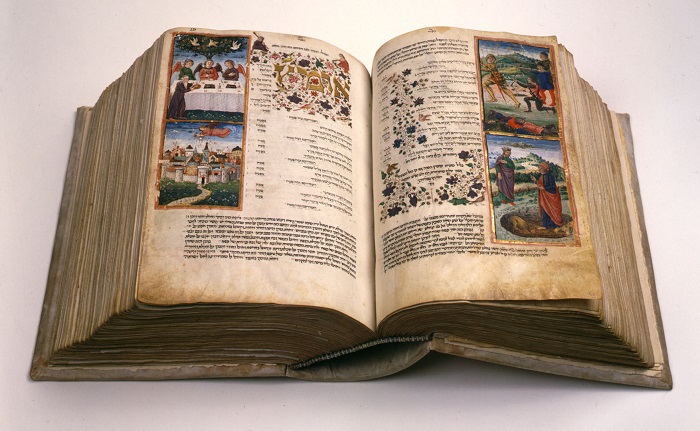ENGLISH CORNER, CON LINDA JIMÉNEZ – This week’s trivia question: How many synagogues are there on the Tunisian island of Djerba?
The first Jews are said to have arrived on the Island of Djerba after the destruction of the first Temple in 586 BCE. The Ghriba synagogue dates back to that period, although the current building, which is impressively beautiful, was reconstructed in the 19th century. It is the site of a yearly pilgrimage in which Tunisian Jews, as well as those who have emigrated to other countries, return to commemorate Lag B’Omer.
While the majority of Djerbians are Muslim, there are important Jewish, Berber and other minorities. The different ethnicities are well-integrated, and share many of the same customs and participate in each others’ festivities. The island’s Jewish heritage and culture are considered to be so important that the Tunisian government, with the participation of the University, is planning to open a Jewish museum, to be housed in one of the local synagogues.
This year the Tunisian Ministry of Tourism organized a special trip for international journalists to participate in the Ghriba pilgrimage and visit other nearby sites. Of special interest was the “Djerbahood” project, located in a traditional village near the Ghriba. Erriadh is several hundred years old, with low, whitewashed houses and narrow winding streets and populated by both Muslims and Jews. International as well as local artists have been invited to paint murals on its walls, transforming it into an open-air museum.

The pilgrimage itself includes several rituals. When entering the synagogue, every pilgrim lights a candle, makes a wish to the Ghriba, then walks to the end of the interior room to the cupboard where Torah scrolls are kept and kisses its doors. In the back of the interior room there is a grotto, which women enter carrying eggs on which they have written prayers and wishes. This custom is typical of Djerba and also part of the Muslim tradition.
The procession of the Menara, which is an imposing hexagonal pyramid on the five tiers of which the symbols of the Jewish tradition are inscribed, is among the annual pilgrimage rituals of the Ghriba. It rests on a cart in the interior courtyard of the synagogue and is covered with shawls that are later sold in auction to the pilgrims. During this time the courtyard is crowded with people, who listen to a concert of traditional music and can buy snacks and local crafts from stands that have been set up under its porticos. The benefits of the auction as well as the stands go to help support the Ghriba Community. The menara then used to be taken out of the Ghriba in procession to visit the other synagogues, but for reasons of security this is no longer done.


Mr. Pérez Trabelsi is the President of the Ghriba synagogue. My colleague Asunción Doménech, of the Spanish magazine La Aventura de la Historia, and I spoke with him about the community and its pilgrimage.





Debe estar conectado para enviar un comentario.